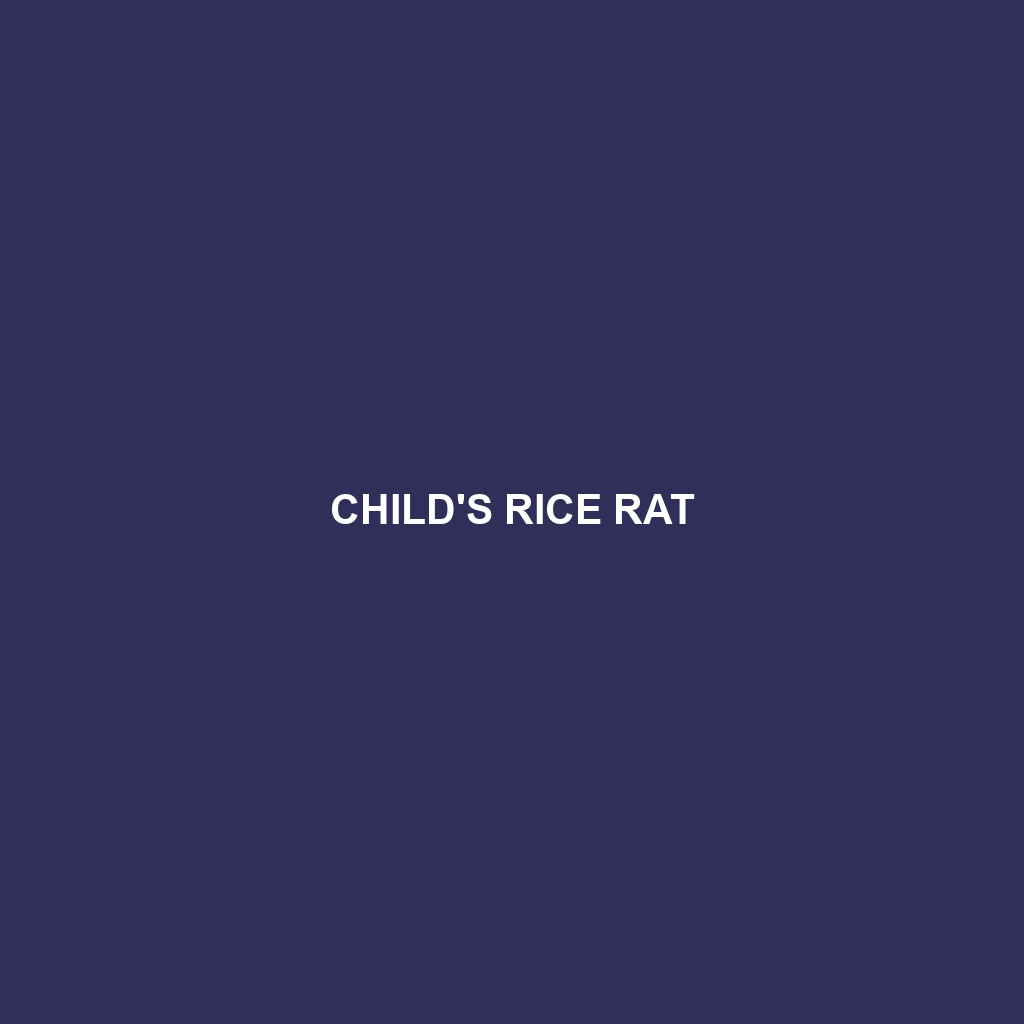Child’s Rice Rat
Common Name: Child’s Rice Rat
Scientific Name: Oryzomys childi
Habitat
Child’s Rice Rat is primarily found in the lowland regions of Central America, particularly in countries such as Costa Rica and Panama. This species thrives in wetlands, marshes, and the edges of rice fields, favoring environments with abundant vegetation that provides both shelter and food. The humid, tropical climates of these regions are ideal for their survival, and they are often spotted in areas with standing water and dense grasses.
Physical Characteristics
The Child’s Rice Rat typically measures around 20 to 30 cm in body length, with a tail that can add another 15 to 25 cm. Their fur is soft and generally reddish-brown to gray in color, featuring a lighter underbelly. One of their most distinctive characteristics is their large, rounded ears and long whiskers, which aid in navigating their habitat. The species is also recognized for its slightly webbed feet that allow them to swim adeptly in wetland environments.
Behavior
Child’s Rice Rat exhibits nocturnal behavior, being most active during the night when it forages for food. They are known to be semi-aquatic, frequently entering water to escape predators or to find food. Their social structure is generally solitary, though they may be seen in small groups during mating season or in areas rich in resources. Their agility in climbing and swimming is also notable, helping them evade various predators while seeking shelter in dense vegetation.
Diet
The diet of the Child’s Rice Rat consists mainly of seeds, grains, and aquatic plants, with a particular inclination towards rice in agricultural areas. They are also opportunistic feeders, consuming insects and small invertebrates to supplement their nutrition. Their feeding habits play a significant role in seed dispersion within their habitat, contributing to the health of their ecosystems.
Reproduction
Child’s Rice Rats typically breed throughout the year, with a peak during the wet season. The gestation period lasts approximately 25 to 30 days, after which a female can give birth to 3 to 6 offspring. Young rats are born hairless and helpless, relying heavily on their mother during the early weeks of life. They reach sexual maturity within a few months and display typical maternal behaviors such as nest building and attentive care for the young.
Conservation Status
The current conservation status of the Child’s Rice Rat is classified as vulnerable. This assessment is largely due to habitat loss stemming from agricultural expansion and wetland drainage, which threatens their natural living conditions and food sources. Conservation efforts are essential to protect their dwindling habitats and to ensure the long-term survival of this species.
Interesting Facts
An interesting fact about the Child’s Rice Rat is its remarkable ability to swim. Unlike many rodent species, this rat is highly adapted to aquatic life, making it an excellent swimmer that can remain submerged to evade threats. Additionally, these rats are known to communicate with various vocalizations, aiding in social interactions during mating or territorial disputes.
Role in Ecosystem
The Child’s Rice Rat plays a critical role in its ecosystem as both a seed disperser and a prey species for larger predators. By feeding on seeds and plants, they help maintain the diversity of their habitat. Moreover, their presence supports the food web, providing nourishment for birds of prey, snakes, and carnivorous mammals. Their contributions to the health of wetlands and agricultural landscapes underline their ecological importance.
